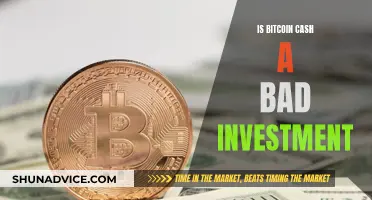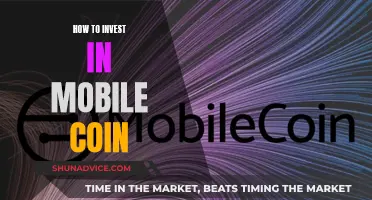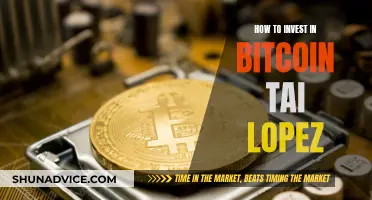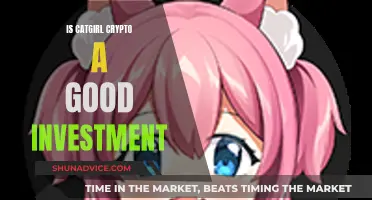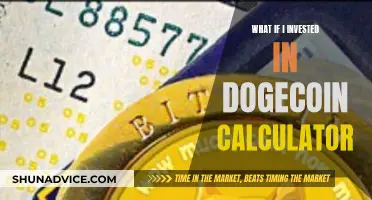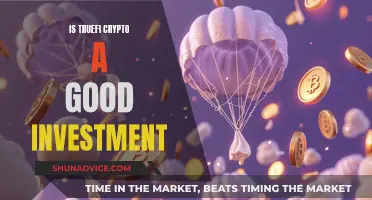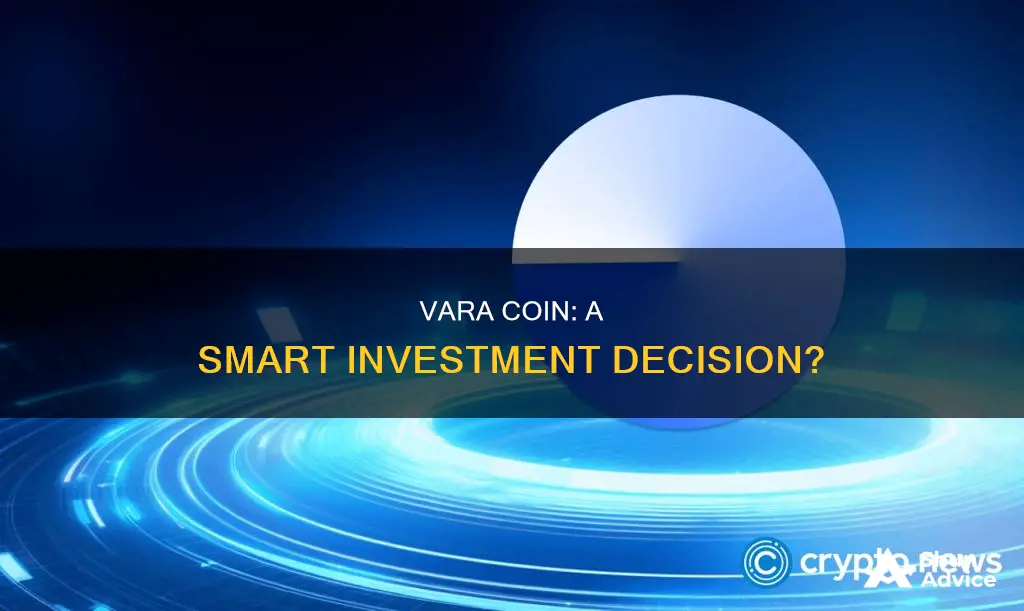
Vara (VARA) is the native token of the Vara Network, a blockchain network built on Gear Protocol. Launched as a standalone network in 2021, the Vara Network is a layer-1 decentralized network that allows developers to build and deploy decentralized applications. The VARA token has core utility features such as transaction fees, staking, network security, and governance. The current price of VARA is $0.0229, with a 24-hour trading volume of $331,351. When considering whether Vara is a good investment, it's important to remember that cryptocurrencies are highly volatile and may not be suitable for all investors. It depends on your personal risk tolerance and investment goals. Before investing, it's crucial to do your own research and understand the risks and potential rewards.
What You'll Learn

Vara Network's crypto-economics
Vara Networks is a layer-1 decentralized network built on Gear Protocol, a cloud infrastructure platform that provides an environment for web2 and web3 developers to build infrastructure solutions and decentralized applications (dApps). The Vara Network is based on three core concepts: the actor model, persistent memory, and Wasm, a WebAssembly-based virtual machine.
The VARA token is native to the Vara Network and serves multiple purposes. Firstly, it is used for transaction fees, staking, and network security. VARA tokens can be staked by token holders to contribute to network security and receive a portion of the block reward. Secondly, VARA tokens are essential for interacting with smart contracts on the network, including deploying them. Developers can pre-fund their smart contracts with gas using VARA, enabling self-executing smart contracts. Lastly, VARA tokens are used for governance, allowing holders to participate in decision-making processes.
The Vara Network employs several mechanisms to balance incentives and ensure ecosystem stability while addressing the issue of excessive inflation in Layer 1/Layer 2 projects. The protocol rewards stakers for contributing to network security without affecting decentralization. To achieve this, the Vara Network utilizes an Inflation Offsetting Pool, which reduces Total Token Supply (TTS) inflation to 0% for the first 24+ months. Additionally, the Vara Network targets an Ideal Staking Rate of 85%, incentivizing or disincentivizing staking to maintain this rate and mitigate inflationary pressure.
The Vara Network also introduces a novel model for distributing block rewards. Instead of following a flat predetermined inflation rate, Vara uses a decreasing annual inflation model. This model aims to prevent the minting of an excessive number of tokens, aligning token issuance with ecosystem growth and mitigating inflation. The Vara Network calculates block rewards based on the staking rate and the number of stakeable tokens, rewarding validators for their participation in the network.
In summary, the Vara Network's crypto-economics focus on maintaining network decentralization, mitigating inflation, and incentivizing stakeholder participation. The VARA token is central to the network's functionality and governance, and the protocol employs various mechanisms to balance incentives and stabilize the ecosystem.
Why Bitcoin is Still a Smart Investment Move
You may want to see also

VARA token utility
VARA tokens are the native tokens of the Vara Network, a blockchain network built on the Gear Protocol. The tokens have several utilities that are crucial to the network's functionality and security.
Firstly, VARA tokens are essential for transaction fees, staking, and network security. They are required for all transfers of the gas token or interactions with smart contracts on the network, including developers deploying smart contracts. This includes the ability to pre-fund smart contracts with gas for future execution using Gas Pools, enabling self-executing smart contracts.
Secondly, VARA tokens play a vital role in the consensus model of the Vara Network. Token holders contribute to network security by staking their VARA tokens and receiving a portion of the block reward in return. This process helps secure the network and incentivizes token holders to participate actively.
Additionally, VARA tokens are used for governance purposes, allowing holders to have a say in the decision-making process of the Vara Network.
The total token supply of VARA is 10 billion, with vesting periods for the initial mint of tokens lasting 12 months, followed by linear vesting periods.
The Vara Network aims to provide a platform for developers to build and deploy decentralized applications seamlessly, bridging the gap between Web2 and Web3 technologies. It is designed to support a wide range of use cases, including gaming, financial applications, tokenizing real-world assets, and managing supply chains.
Bitcoin or Ripple: Which Crypto is the Better Investment?
You may want to see also

VARA token distribution
The VARA token is the native token of the Vara Network, a blockchain network built on the Gear Protocol. The total token supply of VARA is 10 billion. The token has core utility features required for the Vara Network to operate, including transaction fees, staking, network security, and governance. VARA tokens are used to pay network gas fees and participate in governance decisions.
The vesting periods for the initial mint of VARA tokens are as follows:
- Founders/Team/Advisors: Fully locked for 12 months, then 36 months linear vesting with no lump-sum unlock.
- Investors: Fully locked for 12 months, followed by 12 months of linear vesting with no lump-sum unlock.
All transfers of the gas token or interactions with smart contracts on the Vara Network require VARA tokens, including developers deploying smart contracts. Developers can pre-fund their smart contracts with gas for future execution using Gas Pools, enabling self-executing smart contracts.
VARA tokens also play a crucial role in the consensus model of the Vara Network. Token holders contribute to network security by staking their VARA tokens in exchange for a portion of the block reward. This helps to secure the network and maintain its decentralised nature.
The Vara Network aims to balance incentives and ensure ecosystem stability. While most protocols award the entire network rewards (block rewards, transaction fees, etc.) to the nodes producing the latest block, the Vara Network explores distributing a portion of block rewards directly to dApp developers. This model incentivises the creation of world-class dApps on the network and can be adjusted through governance decisions.
The Vara Network also implements measures to mitigate excessive inflation, which can impact financial sustainability and the community. The maximum inflation rate for the first year is 6%, with a decreasing inflation rate in subsequent years. To offset inflationary pressure, mechanics such as limiting the amount of stakeable tokens and utilising an Inflation Offsetting Pool are employed.
Coins: A Smart Investment Move?
You may want to see also

VARA token inflation and anti-inflation mechanics
VARA is the native token of the Vara Network, a blockchain network built on Gear Protocol. The Vara Network is a standalone layer-1 decentralized network that allows developers to build and deploy decentralized applications. The VARA token plays a crucial role in the network's consensus model, where token holders contribute to network security by staking their tokens in exchange for a portion of the block reward.
To ensure the financial sustainability of the Vara Network and maintain the value of the VARA token, several inflation and anti-inflation mechanics have been implemented:
- The maximum inflation rate for the first year is 6%, with a decreasing inflation rate in subsequent years. The exact rates will be determined by governance voting.
- The amount of stakeable tokens is limited to decrease the annual inflation rate. Team and investor tokens are locked and not stakeable until they are vested, reducing potential inflation and protecting against centralization of token ownership.
- An Inflation Offsetting Pool is allocated 10% of the total token supply to offset the increase in total token supply caused by token emission from block rewards. Tokens from this pool are automatically sent to a zero address ("burned") proportionally to the number of minted inflationary tokens.
- About one-third of the Foundation's staking rewards will go towards replenishing the Inflation Offsetting Pool, with the remaining two-thirds funding Foundation operations and protocol development.
- In-market staking incentives are provided to maintain the Ideal Staking Rate of 85%. A higher ROI is offered for staking when the staking rate is below the ideal rate, and a diluted return is given when the staking rate is higher, encouraging token holders to unstake.
- The Vara Network utilizes Polkadot's standard inflation model with modifications to align with the network's unique characteristics. The block reward curve and ROI model incentivize token holders to maintain the Ideal Staking Rate.
- The effective inflation of the total token supply is a variable, not a constant, in the developed model. The number of new tokens issued as block rewards is determined by the block rewards curve, which is influenced by the staking ratio.
- A maximum ROI of 30% has been implemented, with any surplus above this cap going to the Vara treasury.
The Average Person's Guide to Bitcoin Investing
You may want to see also

Vara Network's potential use cases
Vara Network is a layer-1 decentralized network that runs on the Gear Protocol. It is designed to be fast, scalable, and forkless upgradeable, providing an ideal environment for next-generation applications. Vara's potential use cases include:
Gaming
Vara's technology solves GameFi performance and scalability issues, which hold back developer potential and greater user adoption. Vara enhances decentralized gaming with Gear's JS API, enabling modern game engine utilization. Vara also provides high-level security and protection for digital in-game assets.
Finance
Vara provides high transaction throughput and prompt responses for payment and financial applications, ensuring speedy and secure transactions. Vara also offers a yield farming mechanism, allowing users to stake their tokens and earn additional tokens as rewards.
Tokenizing Real-World Assets
Vara can be used for tokenizing real-world assets, such as art, music, collectibles, tickets, and real estate. This allows for the creation of a global asset ecosystem, where assets can be traded with ease and security.
Supply Chain Management
Vara's smart contracts and on-chain programs can automate and streamline supply chain processes, reducing the risk of fraud and data loss. This improves efficiency, transparency, and trust between all parties involved in the supply chain.
Decentralized Autonomous Organizations (DAOs)
DAOs are organizations that operate without central authority, embracing democratic decision-making and flat structures. Vara's fast, inexpensive transactions are well-suited for DAO governance, discussions, voting, and proposal mechanisms.
Decentralized Finance (DeFi)
Vara provides an alternative to the traditional financial system, allowing users to borrow, save, invest, trade, and more with their money. Vara's highly scalable architecture enables lightning-fast transactions with minimal fees, enhancing liquidity and activity within DeFi applications.
ID Coin: A Smart Investment Decision?
You may want to see also
Frequently asked questions
VARA is the native token of the Vara Network, a blockchain network built on Gear Protocol. The Vara Network allows developers to build and deploy decentralized applications.
As of August 27, 2024, the price of Vara Coin is $0.0229. The price has decreased by 0.22% in the last 24 hours.
The market cap of Vara Coin is $12,679,499, and it is ranked #919 in CoinMarketCap.
The decision to invest in Vara Coin depends on your personal risk tolerance and investment goals. Vara Coin is a highly volatile cryptocurrency, and its price can be affected by various factors such as government regulations, technological progress, and market sentiment. It is crucial to understand the risks and do your own research before investing in any cryptocurrency.


